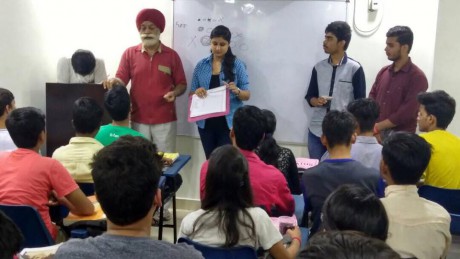Common University Entrance Test (CUET)
The Common University Entrance Test (CUET) is an examination conducted by the National Testing Agency for admission to undergraduate programs at different central universities and other institutions. It must be noted that there is a separate examination conducted, called CUET PG, for admission to postgraduate programs. Until 2021, the exam was called the Central Universities Common Entrance Test (CUCET). The exam is now called as CUET as more universities and colleges have started accepting CUET scores for UG admission.
CUET Eligibility
\Candidates wishing to appear for the CUET exam must fulfil the eligibility criteria set by the National Testing Agency. The eligibility requirement to appear for the exam involves nationality, age limit, and educational qualifications. Interested students can check the eligibility criteria for the exam below:
- Aspiring candidates must have passed 10+2 with a minimum 50% marks as aggregate (45% of SC/ST candidates)
- Candidates must have a relevant subject in 10+2 to apply for any respective course.
- Candidates must be Indian citizens to appear for the CUET exam. A subject of Bhutan & Nepal are also allowed to appear for the exam.
- There is no age limit to appear for the CUET exam.
- The number of attempts a candidate may take is unrestricted. Candidates may appear for the exam as many times as desired as long as they meet all other qualifying conditions.
CUET Exam Pattern
Candidates aspiring for admission to undergraduate programs through the CUET exam must be aware of the exam pattern. The detailed CUET exam pattern is as follows:
Particulars |
Details |
Mode |
Online |
Sections |
Section 1A: 13 Languages (As a medium of exam paper and language paper as well) |
Maximum Number of Tests |
An aspirant can take a maximum of 9 tests. These 9 tests can be taken in the following manner: |
Slots |
|
Maximum Number of Tests |
|
CUET Syllabus
Understanding the CUET syllabus is important if any candidate is wishing to appear for the exam. Interested candidates can check the syllabus in the table below:
Section |
Details |
Section 1 (Language) (Section IA and Section IB) |
In this section questions will include Reading Comprehension which will be based on different types of passages like Literary, Narrative, and Factual. There will also be Vocabulary questions. Other topics include: Verbal Ability, Rearranging the parts, Choosing the correct word, Synonyms and Antonyms |
Section II (Domain-Specific Subject) |
This section will include MCQs based on the Class 12th syllabus |
Section III (General Test) |
Numerical Ability, Quantitative Reasoning, Logical and Analytical Reasoning, General Knowledge, Current Affairs, General Mental Ability |
CUET Counselling
Selected candidates are informed of the counselling phase once the CUET results are announced. Participating institutions will upload the admission form on their respective websites following the announcement of the results. Filling out the relevant admission forms is required for students who want to enroll in these colleges and universities. Each participating college carries out the counselling on its own.Candidates that are interested might check the counselling procedure below:
- Those who are eligible to participate in the CUET counselling process will be listed in a rank list that is published by each participating institute.
- Candidates must first register online, then appear for online counselling followed by in-person counselling.
- When seats are allocated, applicants must pay the admission fee and appear at the institutes to get the admission offer.












